Abstract
Alzheimers disease (AD) is an intractable, neurodegenerative disease that appears to be brought about by both genetic and non-genetic factors. The neuropathology associated with AD is complex, although amyloid plaques composed of the β-amyloid peptide (Aβ) are hallmark neuropathological lesions of AD brain. Indeed, Aβ plays an early and central role in this disease. β-site amyloid precursor protein (APP) cleaving enzyme 1 (BACE1) is the initiating enzyme in Aβ genesis and BACE1 levels are elevated under a variety of conditions. Given the strong correlation between Aβ and AD, and the elevation of BACE1 in this disease, this enzyme is a prime drug target for inhibiting Aβ production in AD. However, nine years on from the initial identification of BACE1, and despite intense research, a number of key questions regarding BACE1 remain unanswered. Indeed, drug discovery and development for AD continues to be challenging. While current AD therapies temporarily slow cognitive decline, treatments that address the underlying pathologic mechanisms of AD are completely lacking. Here we review the basic biology of BACE1. We pay special attention to recent research that has provided some answers to questions such as those involving the identification of novel BACE1 substrates, the potential causes of BACE1 elevation and the putative function of BACE1 in health and disease. Our increasing understanding of BACE1 biology should aid the development of compounds that interfere with BACE1 expression and activity and may lead to the generation of novel therapeutics for AD.
Keywords: Alzheimer's, BACE1, β-secretase, Aβ, vascular disease, regulation, stress
Current Genomics
Title: The Basic Biology of BACE1: A Key Therapeutic Target for Alzheimers Disease
Volume: 8 Issue: 8
Author(s): R. Vassar and S. L. Cole
Affiliation:
Keywords: Alzheimer's, BACE1, β-secretase, Aβ, vascular disease, regulation, stress
Abstract: Alzheimers disease (AD) is an intractable, neurodegenerative disease that appears to be brought about by both genetic and non-genetic factors. The neuropathology associated with AD is complex, although amyloid plaques composed of the β-amyloid peptide (Aβ) are hallmark neuropathological lesions of AD brain. Indeed, Aβ plays an early and central role in this disease. β-site amyloid precursor protein (APP) cleaving enzyme 1 (BACE1) is the initiating enzyme in Aβ genesis and BACE1 levels are elevated under a variety of conditions. Given the strong correlation between Aβ and AD, and the elevation of BACE1 in this disease, this enzyme is a prime drug target for inhibiting Aβ production in AD. However, nine years on from the initial identification of BACE1, and despite intense research, a number of key questions regarding BACE1 remain unanswered. Indeed, drug discovery and development for AD continues to be challenging. While current AD therapies temporarily slow cognitive decline, treatments that address the underlying pathologic mechanisms of AD are completely lacking. Here we review the basic biology of BACE1. We pay special attention to recent research that has provided some answers to questions such as those involving the identification of novel BACE1 substrates, the potential causes of BACE1 elevation and the putative function of BACE1 in health and disease. Our increasing understanding of BACE1 biology should aid the development of compounds that interfere with BACE1 expression and activity and may lead to the generation of novel therapeutics for AD.
Export Options
About this article
Cite this article as:
Vassar R. and Cole L. S., The Basic Biology of BACE1: A Key Therapeutic Target for Alzheimers Disease, Current Genomics 2007; 8 (8) . https://dx.doi.org/10.2174/138920207783769512
| DOI https://dx.doi.org/10.2174/138920207783769512 |
Print ISSN 1389-2029 |
| Publisher Name Bentham Science Publisher |
Online ISSN 1875-5488 |
Call for Papers in Thematic Issues
Current Genomics in Cardiovascular Research
Cardiovascular diseases are the main cause of death in the world, in recent years we have had important advances in the interaction between cardiovascular disease and genomics. In this Research Topic, we intend for researchers to present their results with a focus on basic, translational and clinical investigations associated with ...read more
Deep learning in Single Cell Analysis
The field of biology is undergoing a revolution in our ability to study individual cells at the molecular level, and to integrate data from multiple sources and modalities. This has been made possible by advances in technologies for single-cell sequencing, multi-omics profiling, spatial transcriptomics, and high-throughput imaging, as well as ...read more
New insights on Pediatric Tumors and Associated Cancer Predisposition Syndromes
Because of the broad spectrum of children cancer susceptibility, the diagnosis of cancer risk syndromes in children is rarely used in direct cancer treatment. The field of pediatric cancer genetics and genomics will only continue to expand as a result of increasing use of genetic testing tools. It's possible that ...read more
Related Journals
 2
2
- Author Guidelines
- Graphical Abstracts
- Fabricating and Stating False Information
- Research Misconduct
- Post Publication Discussions and Corrections
- Publishing Ethics and Rectitude
- Increase Visibility of Your Article
- Archiving Policies
- Peer Review Workflow
- Order Your Article Before Print
- Promote Your Article
- Manuscript Transfer Facility
- Editorial Policies
- Allegations from Whistleblowers
- Announcements
Related Articles
-
Ascorbic Acid: An Old Player with a Broad Impact on Body Physiology Including Oxidative Stress Suppression and Immunomodulation: A Review
Mini-Reviews in Medicinal Chemistry Investigating Physical, Psychological and Social Well-being of Older Persons in Jordan
Current Aging Science Editorial: Thematic Issue-Topic–Diabetic Cardiovascular Disease–An Unmet Medical Need: Emerging Targets and Therapies-Introduction to the Special Issue
Cardiovascular & Hematological Agents in Medicinal Chemistry Free Radicals Generated by Post-Prandial Oxidative Burst in the Early Alterations of Vascular Contractility
Clinical Immunology, Endocrine & Metabolic Drugs (Discontinued) Recents Patents for Isolating, Delivering and Tracking Adult Stem Cells in Regenerative Medicine
Recent Patents on Drug Delivery & Formulation Clinical Presentations and Diagnosis of Brucellosis
Recent Patents on Anti-Infective Drug Discovery An Overview of Non-Neural Sources of Calcitonin Gene-Related Peptide
Current Medicinal Chemistry Obesity and Inflammation and Altered Clopidogrel Pharmacokinetics and Pharmacodynamics
Drug Metabolism Letters Coronary Artery Disease and Endothelial Dysfunction: Novel Diagnostic and Therapeutic Approaches
Current Medicinal Chemistry Emerging Vascular Risk Factors in Women: Any Differences from Men?
Current Medicinal Chemistry Potential Anti-cancer Drugs Commonly Used for Other Indications
Current Cancer Drug Targets subject Index To Volume 3
Current Drug Targets The Role of Amino Acids in the Modulation of Cardiac Metabolism During Ischemia and Heart Failure
Current Pharmaceutical Design Ghrelin and Cardiovascular Diseases
Current Cardiology Reviews Honey as a Source of Dietary Antioxidants: Structures, Bioavailability and Evidence of Protective Effects Against Human Chronic Diseases
Current Medicinal Chemistry C-Reactive Protein and Atherosclerosis: An Update
Vascular Disease Prevention (Discontinued) Stress Hormone-Mediated DNA Damage Response -- Implications for Cellular Senescence and Tumour Progression
Current Drug Targets Statins May Prevent Atherosclerotic Disease in OSA Patients without Co-Morbidities?
Current Vascular Pharmacology Zebrafish as a Model System to Screen Radiation Modifiers
Current Genomics A Brief History of ‘Lone’ Atrial Fibrillation: From ‘A Peculiar Pulse Irregularity’ to a Modern Public Health Concern
Current Pharmaceutical Design












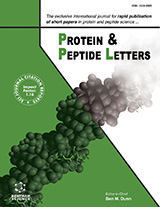
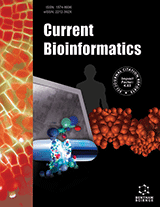
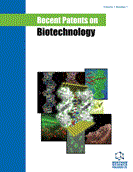
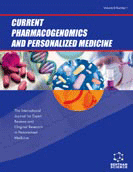
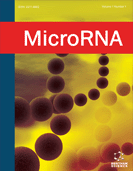
.jpeg)








